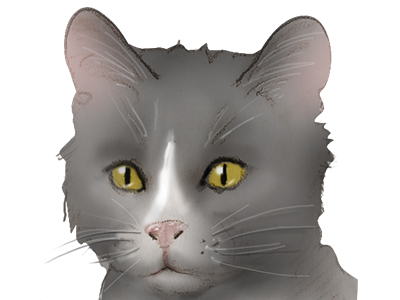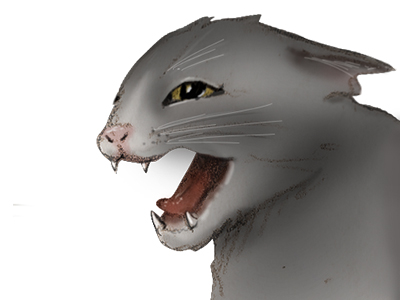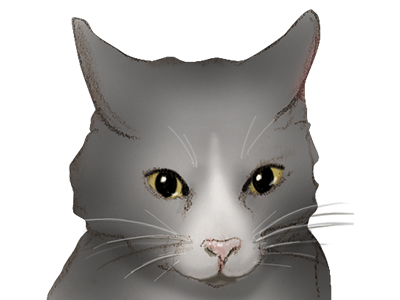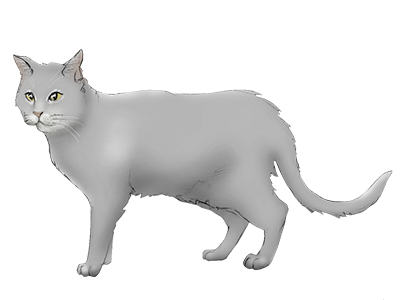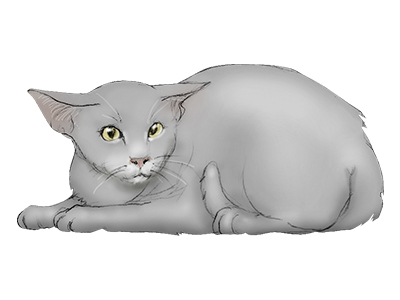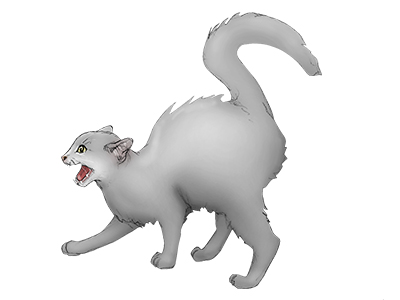Feline Behavior Problems: Aggression
Aggression, defined as hostile or violent behavior intended to dominate or intimidate another individual, is a fairly common behavioral problem in cats.
Its causes in cats can be complex, both in terms of triggers and targets, making it challenging to find strategies to eliminate aggressive feline behavior.
The consequences of aggressive behavior in cats can be significant, ranging from injuries to other cats and people to the surrender of aggressive cats to shelters. A recent study reported that 27 percent of cats relinquished to shelters for behavioral reasons were surrendered for aggression. Given these high stakes, it is important that cat owners understand the cause of their pet’s aggressive behavior in order to develop a plan to successfully intervene.
Regardless of their cause, recognizing the signs that a cat is fearful or aggressive can help prevent injury to pets and people. These cues can be separated into two categories: those observed in the face and head and those expressed by body posture.
Signs of aggression include dilated pupils, ears flattened backward on the head, tail held erect with hairs raised, and an arched back. Signs of fear include dilated pupils, ears flattened and held outward, whiskers flattened or pressed downward onto the face, tail closely wrapped or tucked under the body, and head held upward while lying prone ( Figures 1 and 2 ).
There are a number of different types of aggression that cats can display, and in some cases, a cat may display more than one type at a time. Here are some general principles for managing all types of feline aggression:
- Early intervention is best.
- Any type of physical punishment can increase a cat’s fear or anxiety and worsen aggression.
- Medications may help, but only in combination with behavioral and/or environmental modification.
- Recognizing aggression and startling an aggressive cat without physical contact is usually effective.
- Avoid situations that you know make a cat aggressive.
- Separate cats that act aggressively toward each other and reintroduce slowly with positive reinforcement, as described in the Territorial Aggression section.
- Food treats are excellent positive enforcers of non-aggressive behavior.
- Aggression that cannot be managed using the techniques outlined in this brochure may require consultation with a veterinary behaviorist. It is important to use the information presented here in close collaboration with your veterinarian.
The first step in managing an aggressive cat is to ensure that there is no medical reason for aggressive behavior. Diseases such as hyperthyroidism, osteoarthritis, dental disease, and central nervous system problems may cause aggression, so consult a veterinarian before attempting to manage aggressive cats through behavioral and/or environmental modification.
Once a veterinarian has ruled out medical problems, identifying the type of aggression is key to understanding its cause and to developing a plan to intervene.
Types of Aggression
Cats can display aggression for a number of reasons. Determining the cause of a cat’s aggressive behavior is important, as different types of aggression may be managed differently. The following are general categories of feline aggression and how they can each be addressed.
Play Aggression
Young cats and kittens that were not raised with littermates, or that lack opportunities to play most commonly show play aggression. Learning appropriate play is an important part of a cat’s socialization, and this normally occurs during time spent with littermates. Cats learn that they are biting or scratching too hard when their littermates stop playing or retaliate. Cats raised alone during their early lives may not learn this important lesson.
Cats that are about to engage in play aggression will often thrash their tails back and forth, have their ears pinned to the tip of their head, and have dilated pupils. They may stalk their target, whether animal or human, and will often pounce from a hiding place as the target passes by.
To intervene in play aggression, first determine if there is a pattern to when and where aggressive behavior occurs. If so, preempt the aggression by distracting the cat with play or denying access to places that encourage the behavior, such as under the bed if the cat hides there before pouncing. A bell on a breakaway collar may be helpful in signaling a cat’s whereabouts prior to and during aggressive behavior.
The use of noise deterrents within a few seconds of aggressive behavior, such as a blast from a can of compressed air or a person hissing, may be helpful in startling a cat and redirecting his attention. The goal is not to scare the cat, but to distract him and refocus his attention. Never physically punish, or even touch a cat, during these times, as this may cause a cat to become fearful of people or may be interpreted as play, which may inadvertently reward the aggressive behavior. Walking away and ignoring a cat engaged in play aggression may teach him that inappropriately aggressive play results in no play at all.
Any objects used to distract a cat from play aggression should be kept at a distance from your hands so that the cat cannot bite or scratch you while venting his aggression on the toy.
Fear Aggression
This type of aggression may be seen when a cat encounters unfamiliar stimuli, such as a new person, animal, or noise, or when a cat is exposed to an experience that he associates with unpleasant events, such as a trip to the veterinarian.
Cats demonstrating fear aggression may flatten their ears against their heads, hiss, bare their teeth, or crouch low to the ground with their tail tucked under their body, and their fur may stand on end.
The best way to deal with fear aggression is to identify and avoid situations that produce a fearful response. If a situation cannot be avoided, then you can attempt gradual desensitization by briefly exposing the cat to the stimulus that causes the fear from a distance, and then rewarding non-aggressive behavior with food and praise.
It is very important not to console an aggressive cat, as this may be perceived as approval of aggression. It is also important not to retreat or show fear, as this may reinforce the behavior if your retreat is what the cat wants. Lack of attention is a better way to handle fear aggression.
Petting-Induced Aggression
For reasons that remain unknown, some cats may suddenly become aggressive when being petted. Possible explanations include overstimulation and an attempt by the cat to control when the petting ends. Handling, bathing, grooming, and nail trimming can also cause this type of aggression. In many cases, the cat will demonstrate dilated pupils, tail lashing, and ears moved backward on the head before becoming aggressive.
To manage a cat with petting-induced aggression, owners should avoid uninvited handling or petting, any type of physical punishment or restraint, and attempts to pick up or interact with the cat while he is eating. Rewarding a cat with a food treat for allowing brief, light stroking without signs of aggression may also be helpful. Over time, owners can gradually increase the duration of stroking, but with any sign of aggression, the owner should stop the petting and begin a cooling down period with no physical contact.
It is particularly important to supervise cats that display this type of aggression when they are in the presence of young children, who often want to pet cats but miss the visual cues of impending aggression. Ideally, owners should prevent physical contact between small children and a cat with a history of petting-induced aggression.
Redirected Aggression
When a cat is excited by a stimulus but cannot respond directly, the cat may redirect his aggression toward a human or another cat. Common stimuli that trigger redirected aggression include loud noises, seeing an outdoor or stray cat through a window, or an altercation with another cat in the house. Sometimes, aggression may be redirected toward a human after an aggressive interaction between indoor cats.
The best way to prevent this type of aggression is to remove or avoid the stimuli, for example, by pulling down a window shade, using deterrents to keep stray cats away from the window, or by preventing aggressive interactions among indoor cats.
Pain-Induced Aggression
Cats that are in pain may act aggressively toward people or other pets in an attempt to avoid touch, movement, or certain activities that might worsen the pain. Cats with osteoarthritis, for example, may resent having their joints touched or manipulated, and may hiss, bite, or scratch in response. Rarely, some cats may continue to act aggressively even after once-painful parts of their body have healed, presumably to avoid the pain they experienced previously.
Owners can manage pain-induced aggression by refraining from touching painful parts of a cat’s body and by working with a veterinarian to establish an effective therapeutic plan for pain control.
Status-Induced Aggression
Cats may occasionally show signs of aggression toward people or other pets when they want to establish social dominance. Cats that block doors with their bodies or swat at other cats as they pass may be demonstrating this type of behavior.
The best way to address status-induced aggression is to ignore an offending cat completely. Attention, including play and food rewards, should be given only when an aggressive cat is relaxed. A relaxed cat is not swatting or hissing, has normal sized pupils, ears held upright, and normal tail posture, with the tail held upward with no flicking, twitching, or hairs on end.
Territorial Aggression
Cats tend to establish and defend their territories. They may show aggression toward newly introduced cats, and occasionally other animals or people, that encroach upon their established domain. In some cases, cats may even attack resident cats that were previously accepted but were away from the home, such as for a hospital stay. This aggression commonly takes the form of swatting, chasing, and attacking the encroaching individual.
The most important thing to keep in mind when dealing with territorial aggression is not to rush an introduction or reintroduction. New or returning cats should be confined to their own room with separate litter box, water, and food. After a few days, replace the new or returning cat with the aggressive cat and close the door for about 30 minutes, then return the cat being introduced/reintroduced back to his own room and the aggressor back to the rest of the house. This step can be repeated daily for several days.
The next step is to place the cats on opposite ends of the same room in carriers or on leashes with harnesses, so that they can see and smell each other but cannot interact. Feed the cats so that they associate the positive experience of being fed with the presence of the other cat. If they won’t eat, move them farther apart. This step should be done repeatedly over several days, with a smaller distance between the cats each time. Lastly, once the cats have become acclimated to each other’s presence with restraint and feeding, release them in the same room, at a distance, and feed them. If any signs of aggression occur, resume restraint and feeding in the same room until the cats calm down.
This process can take weeks to months, depending upon the cats involved. In some cases, your veterinarian may have to prescribe medication to one or both cats to prevent adverse interactions, but it is important to note that medication must be used in conjunction with the gradual desensitization process outlined above.
It is crucial that you never put your hand or any other body part between cats that are fighting, as you can be seriously injured. Using barriers such as baby gates or panels made of cardboard, light wood, or plastic to separate aggressive cats can be very effective.
Maternal Aggression
Queens that have recently given birth and are nursing kittens may demonstrate aggression toward individuals that approach them. Owners should provide a quiet, low-stress environment, keep visitors to a minimum, and avoid contact with the queen and kittens if they observe aggression. Maternal aggression will usually subside as the kittens get older and more independent.
Inter-Cat Aggression
Male, and more rarely female, cats may demonstrate aggression toward other male cats as they approach social maturity between two and four years of age. The first step in addressing this behavior is to neuter or spay all cats involved, as sexual hormones may play an important role in this type of aggression. Territorial aggression may also play a role, as described above. If neutering and spaying does not improve the situation, the cats should be separated and reintroduced using the technique outlined above.
Updated December 2016



